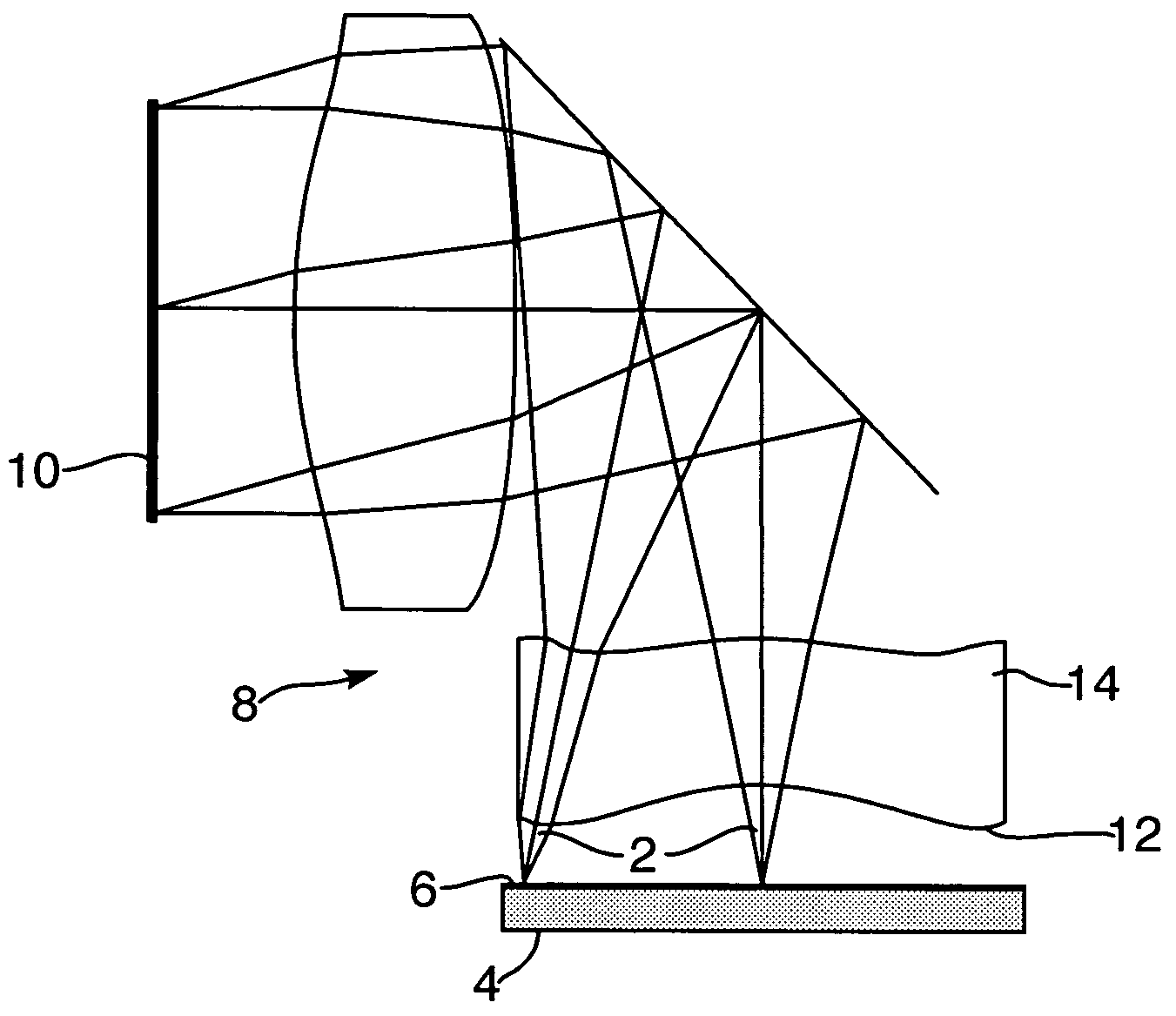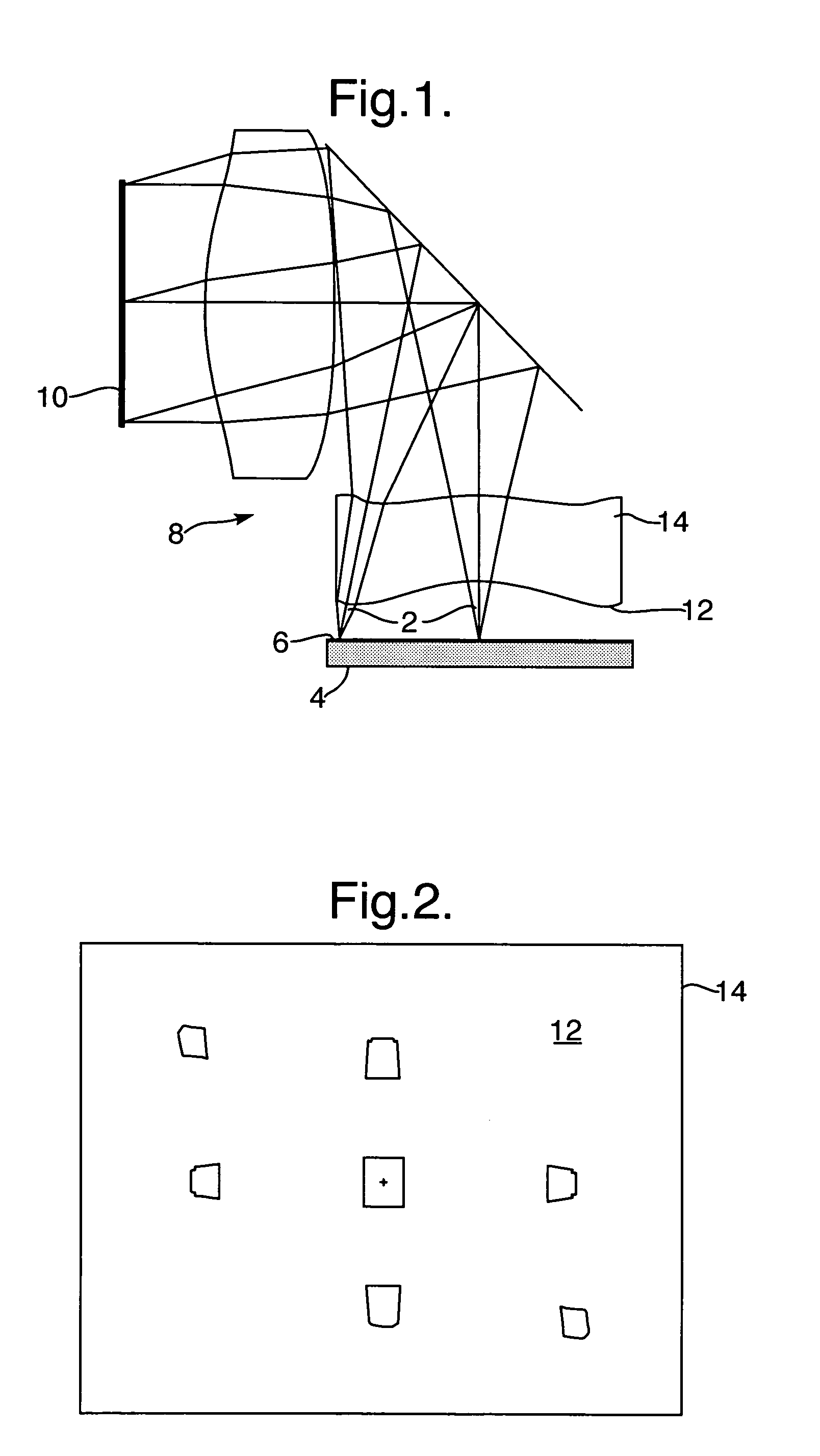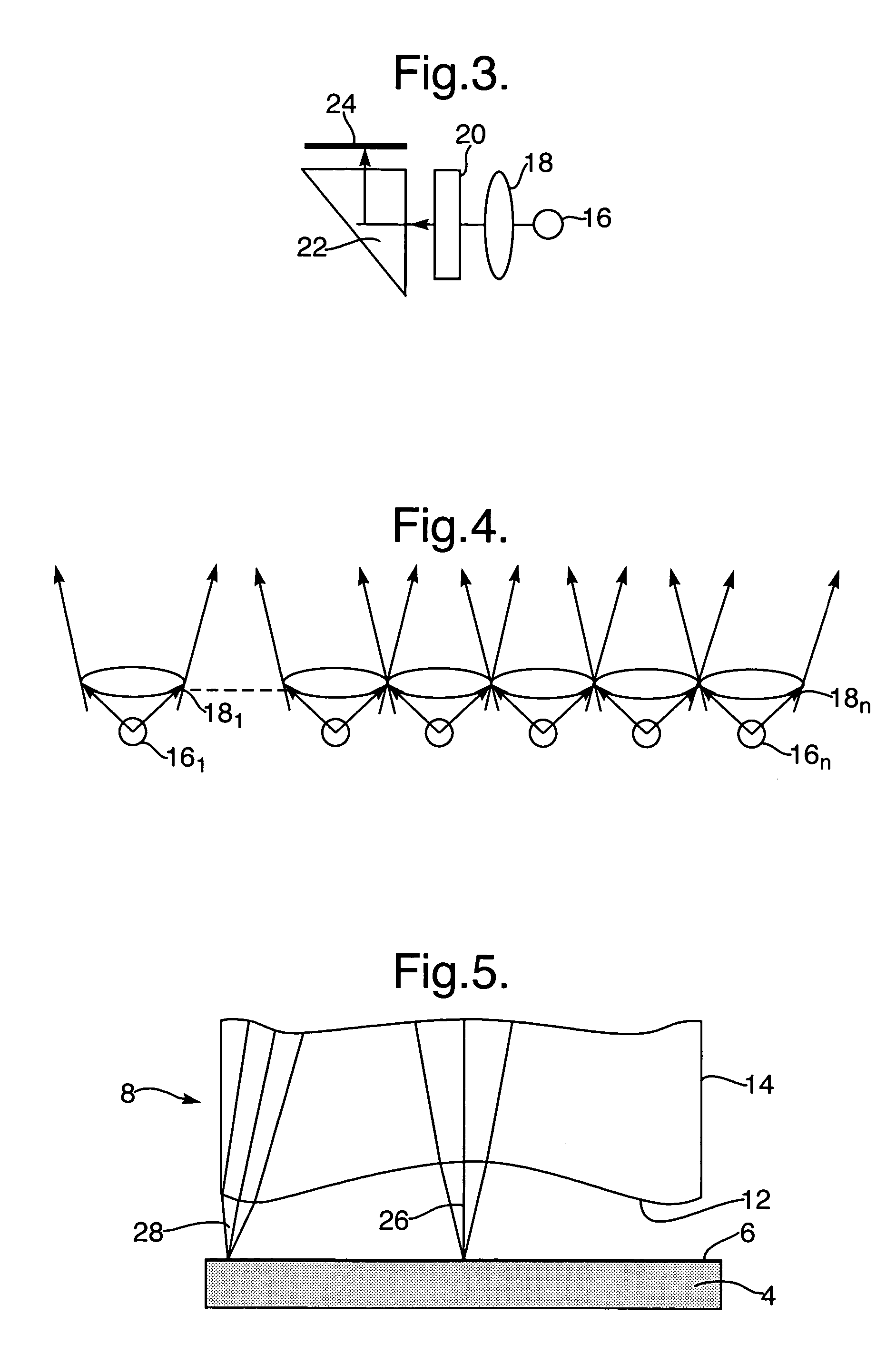High brightness optical device
a high-brightness, optical display technology, applied in optics, instruments, optical light guides, etc., can solve the problems of inconvenient installation, unsafe use, and several significant drawbacks of state-of-the-art huds, and achieve the effect of improving the brightness of an optical display
- Summary
- Abstract
- Description
- Claims
- Application Information
AI Technical Summary
Benefits of technology
Problems solved by technology
Method used
Image
Examples
Embodiment Construction
[0024]FIG. 1 illustrates an optical display system, wherein light waves 2 emerging from a display source 4 are diffused by a light diffuser 6, that can be an integral part of the display source, such that each light wave which is emerging from a single point in the display source is diverged into a finite solid angle. Usually, a Lambertian light diffusing mechanism is preferred, that is, a diffuser wherein the brightness is constant regardless of the angle from which it is viewed. The light waves are then imaged by an imaging module 8 and illuminate an output aperture 10 of the optical system. For direct view optical systems, this output aperture can be defined as a head-motion-box or an eye-motion-box for a biocular or a monocular respectively, that is, the location where the viewer can see the entire image simultaneously. Alternatively, for see-through optical systems, where the image is projected into the viewer's eye(s) through an optical combiner, the output aperture is defined...
PUM
 Login to View More
Login to View More Abstract
Description
Claims
Application Information
 Login to View More
Login to View More - R&D
- Intellectual Property
- Life Sciences
- Materials
- Tech Scout
- Unparalleled Data Quality
- Higher Quality Content
- 60% Fewer Hallucinations
Browse by: Latest US Patents, China's latest patents, Technical Efficacy Thesaurus, Application Domain, Technology Topic, Popular Technical Reports.
© 2025 PatSnap. All rights reserved.Legal|Privacy policy|Modern Slavery Act Transparency Statement|Sitemap|About US| Contact US: help@patsnap.com



